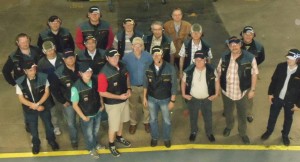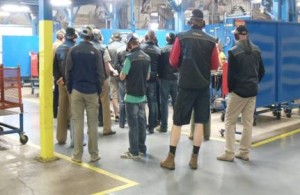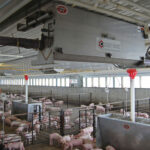DISCussions: Beloit, Kansas Hosts European Visitors
On 25 May 2011, AGCO Challenger dealers hosted nearly twenty customers from Germany and Austria to a rain-soaked visit in Kansas, USA. The visitors were part of the Challenger Tour 2011 to experience farming operations in the United States and...
DISCussions: Beloit, Kansas Hosts European Visitors
On 25 May 2011, AGCO Challenger dealers hosted nearly twenty customers from Germany and Austria to a rain-soaked visit in Kansas, USA. The visitors were part of the Challenger Tour 2011 to experience farming operations in the United States and...On 25 May 2011, AGCO Challenger dealers hosted nearly twenty customers from Germany and Austria to a rain-soaked visit in Kansas, USA. The visitors were part of the Challenger Tour 2011 to experience farming operations in the United States and see first-hand how AGCO farm equipment is produced. After landing in Chicago, USA the group visited a farm in Iowa. During their stopover in Minnesota they toured the AGCO Jackson facility. They spent the night in Kansas City, Kansas before arriving in Beloit. A tour of AGCO Hesston and of a Wichita, Kansas grain elevator completed their North America journey.
in Kansas, USA. The visitors were part of the Challenger Tour 2011 to experience farming operations in the United States and see first-hand how AGCO farm equipment is produced. After landing in Chicago, USA the group visited a farm in Iowa. During their stopover in Minnesota they toured the AGCO Jackson facility. They spent the night in Kansas City, Kansas before arriving in Beloit. A tour of AGCO Hesston and of a Wichita, Kansas grain elevator completed their North America journey.
The schedule of events in Beloit included a barbeque lunch, plant tour and farm visit. As anyone knows who lives in, or regularly visits, the Plains States region, weather plays a large factor in outdoor activities. This trip was no exception.
The week prior, Kansas fields were dangerously dry. On the day the guests were to be at a farm site, it was still raining from the previous stormy night. Consequently, the barbeque was moved indoors and the plant tour took a little extra time. Eventually, there was enough of a break in the rain to stop by one local farm west of Beloit.
The group was able to look at the machinery and “talk shop” comparing farming practices.
Engineering Manager, Rye DeGarmo had this to say, “the highlight of the trip was the farmer-to-farmer discussion. Both the local and European farmers were interested in each others’ farming practices, especially yield amounts and fertilizer usage. Farmers from both continents were surprised to find the numbers of large farms are growing in a very similar fashion to their own — but on opposite sides of the world.”
What is considered a large farm where you live?




